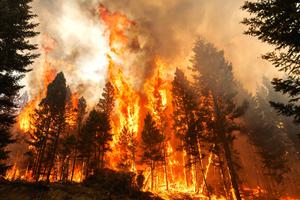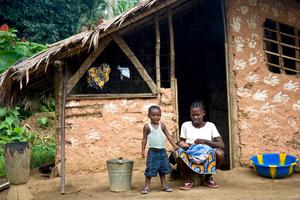Cochlospermum adjanyae, a flowering plant that grows mostly underground and was first recorded by scientists in Angola in 2023. Steve Boyes
As the planet warms and extinctions mount, scientists are racing to catalog the vast array of life on Earth before species disappear. This year, researchers at the Royal Botanic Gardens, Kew, recorded 89 new species of plant and fungi across the globe, from the rocky edges of Antarctica to a dormant volcano in Indonesia.
“It is an incredibly exciting time to be a scientist, but even as we make these wonderful new discoveries, we must remember that nature is under threat, and we have the power to do something about it,” Martin Cheek, a senior researcher with Kew, said in a statement.
Kew scientists highlighted 10 particularly notable varieties of plants and fungi recorded last year.
- Aeranthes bigibbum, a new variety of orchid marked by its translucent flowers, was recorded in a protected forest in Madagascar. Locals guard the forest, earning money from visitors who come to see the blue-beaked Helmet vangas that live in the woods. Were it not for the villagers protecting this rare bird, scientists believe the forest likely would have been cleared and the orchid lost.
- Baphia arenicola, a new species of tree found in the highlands of Angola. This tree, like many found in the region, grows almost entirely underground, offering a small white blossom on the surface.
- Lichtheimia koreana, a species of fungus found growing in soy waste in South Korea. While related fungi are known to cause disease in humans, scientists believe the new species is mostly harmless.
- Dendrobium lancilabium, an orchid with bright red flowers found on Mount Nok, a dormant volcano on the Indonesian island of Waigeo.
- Pinanga subterranea, a species of palm that bears its flowers and fruit largely underground. The plant is known by several names in its native Borneo: Pinang Tanah, Pinang Pipit, Muring Pelandok, and Tudong Pelandok.
- Arthonia olechiana, a fungus that grows on lichens in Antarctica. Lichens are rare on the continent, as they can take root only on bare rocks. They cannot grow on ice, which covers 98 percent of Antarctica.
- Nicotiana olens, a variety of tobacco found in New South Wales that is marked by its sweet-smelling flowers. More than half of known tobacco species are found in Australia.
- Microchirita fuscifaucia, a new species of violet found in Thailand that is identified by its dark purple throat. The flower grows only in two areas, neither of which is protected.
- Indigofera abbottii, one of more than a dozen indigo-bearing plants recorded in South Africa last year.
- Crepidorhopalon droseroides, a possibly carnivorous plant from Mozambique. It can use its sticky hairs to trap insects, but it is unclear whether or not it can digest its prey.
According to Kew, of the plants not yet recorded by science, as many as three in four are threatened with extinction. “It is imperative now, more so than ever, that we do everything in our power to go out into the field with our partners and work out which species of plants and fungi we haven’t given a scientific description yet,” Cheek said. “Without doing so, we risk losing these species without ever even knowing they existed.”
ALSO ON YALE E360
Back from the Dead: New Hope for Resurrecting Extinct Plants










